GM built a demonstrator E7, but it was less to demonstrate the E7 itself than to show off the Train of Tomorrow. Of course, by stimulating interest in riding passenger trains, GM hoped to stimulate sales of its locomotives, but it didn’t build the demonstrator E7 until April 1947, more than two years after it delivered its first E7 to the Alton Route.
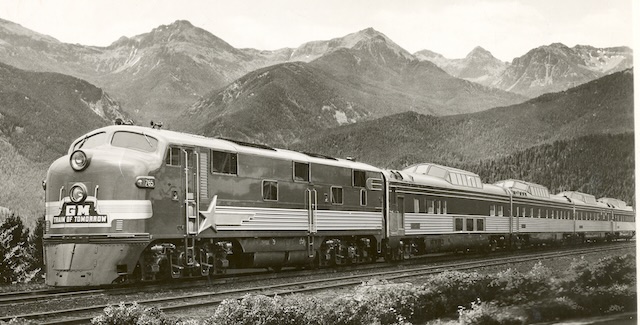
GM built an E7 locomotive specifically to take the Train of Tomorrow on a tour of the nation. Click image to download a 3.5-MB PDF of a press packet about the train. Click here for a larger view of the above photo. Source: Palumbo.
GM President Harlow Curtice described the Train of Tomorrow as a concept train the same way the company built concept cars. Although the four cars of the train were built by Pullman, GM styling went through its usual process of model building before having the train itself built. Greg Palumbo provided me with some photos of some of these models that differ from the final train in several ways.
The first photo shows an observation car that looks more like an automobile of the 1950s than a traditional round-ended tail car. The portion of the car behind the dome also had extra-large windows that nicely curved upwards at the forward end of the compartment. It is too bad that General Motors settled for a more traditional look.
The second photo shows that the original concept for the dining car wasn’t a dome but instead was a car with overhead windows similar to a Seaboard Sun Lounge car. While that meant that more diners would get to dine under glass and also reduced problems for servers, it didn’t have the pizzazz of a dome diner.
According to an article in the August 4, 1945 issue of Railway Age, this domeless diner was only one concept developed by General Motors stylists. The other concept, which the magazine said would actually be built for a planned “Astra Liner,” had a dome with a kitchen in the area beneath the dome. GM originally thought it could fit 10 more seats than in a usual dining car, but in the Train of Tomorrow the kitchen filled both the front of the car and the space beneath the dome.
Here’s a close-up of the observation car showing its many curves, including the curved glass in the dome. Due to wartime restrictions, Pullman was forced to use flat-panel glass in the Train of Tomorrow‘s domes.
GM’s models allowed the removal of the bodies to show complete interior details. The curved opening to the lounge under the dome matched the curved windows in the lounge behind the dome, than the final train. This is only one way that the interior was a little more imaginatively designed than the final train.
The 1945 Railway Age article noted that the Astra Liner’s dome sleeper would have several innovative accommodations. These included a potential three-room suite (double bedroom, single bedroom, and shower bath); rooms with one lower and two upper berths; and two rooms that shared a toilet. None of these ideas were ever realized; the Train of Tomorrow sleeper had three compartments under the dome; two double bedrooms at one of the car; and eight duplex roomettes at the other end.
The article also noted that GM had multiple ideas for what to do with the space beneath the dome in dome coaches. One idea was to use it as a children’s play area, with a Frigidaire refrigerator that mothers could use to store foods.
Another idea was to turn that space into a private room or rooms that families could reserve for a “slight extra charge.” That seems to be what went into the Train of Tomorrow, which had rest rooms at either end of the car; sixteen coach seats in front of the dome; a dozen seats behind the dome; and 20 seats in three different compartments under the dome.
After its tour of the country, GM sold the Train of Tomorrow, including the E7 demonstrator locomotive, to Union Pacific, which renumbered the locomotive 988. UP owned only seven other E7s and jointly owned six more with C&NW and SP, but it ended up buying 46 E8s and 69 E9s.
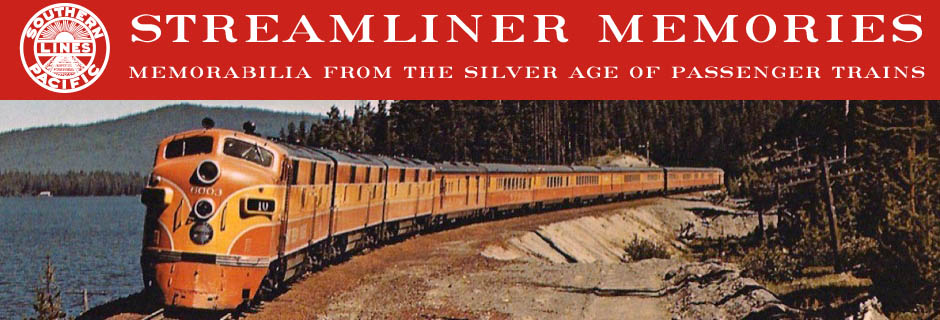
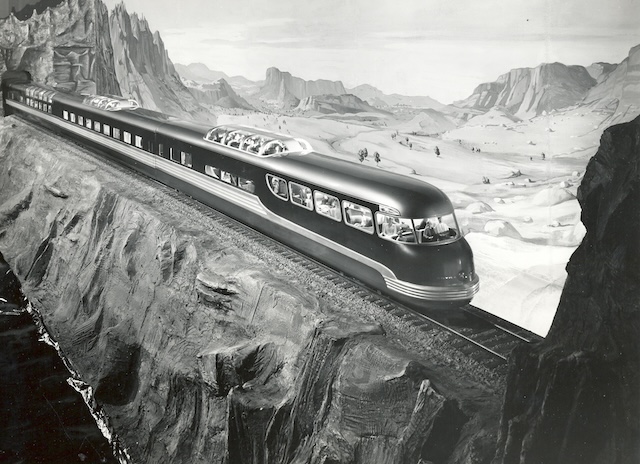
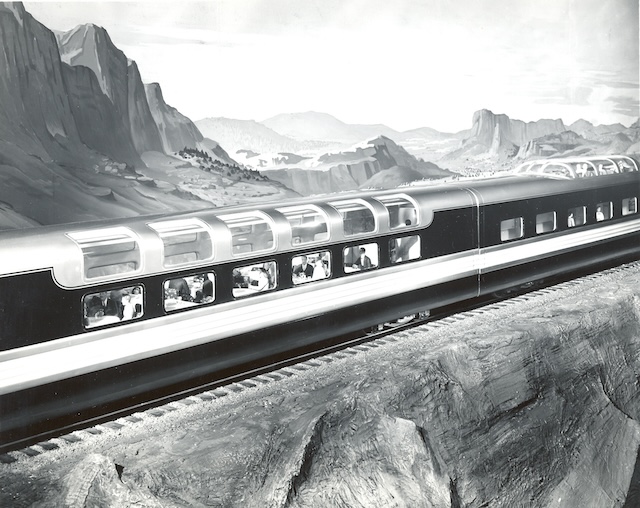
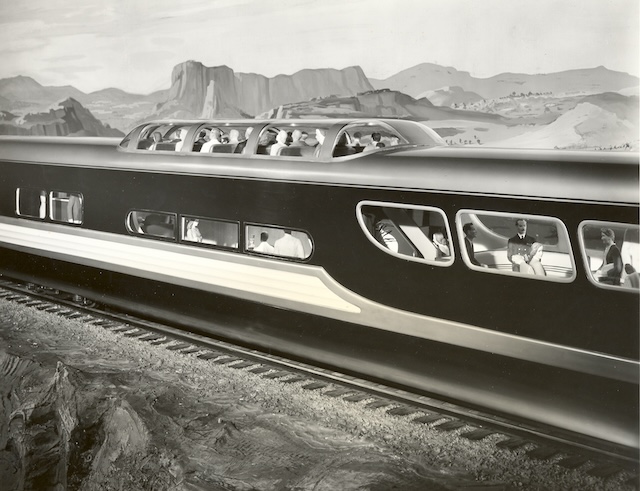
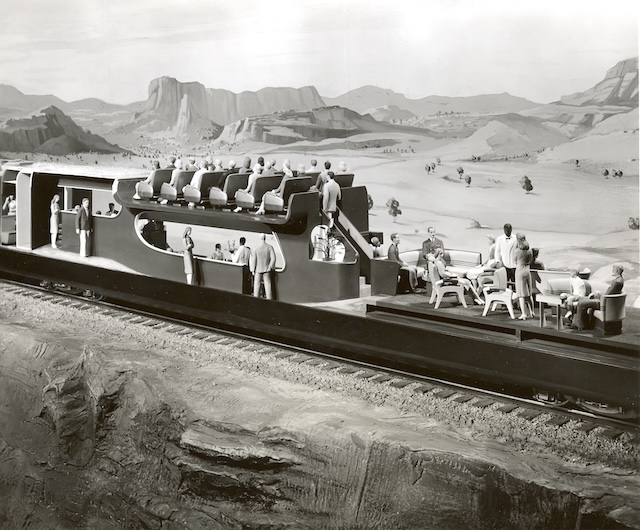
That diner looks like it may have been the inspiration for Budd’s “Top of the Cap” lounge car for Santa Fe’s El Capitan, with its curved windows. The upward visibility is a nice perk, but it’s no substitute for dome cars with their forward and rear visibility.
I think the postwar streamlined cars were the ideal, especially after Amtrak’s arrival and the formation of a national system. The single level cars could, in theory, be deployed anywhere in the system as demand warranted, and there were no issues with clearances. What we ended up with are different cars for different parts of the country from different builders with all the issues of different maintenance procedures and differing spare parts inventories. Amtrak should have borrowed a page from Southwest Airlines’ playbook and settled on one common car platform, with standardized interior accommodations for sleeping cars, coaches, and dining and lounge cars. This would also have made it easier to move personnel around, as they would know exactly where everything was in the car they were working, with no additional training required.